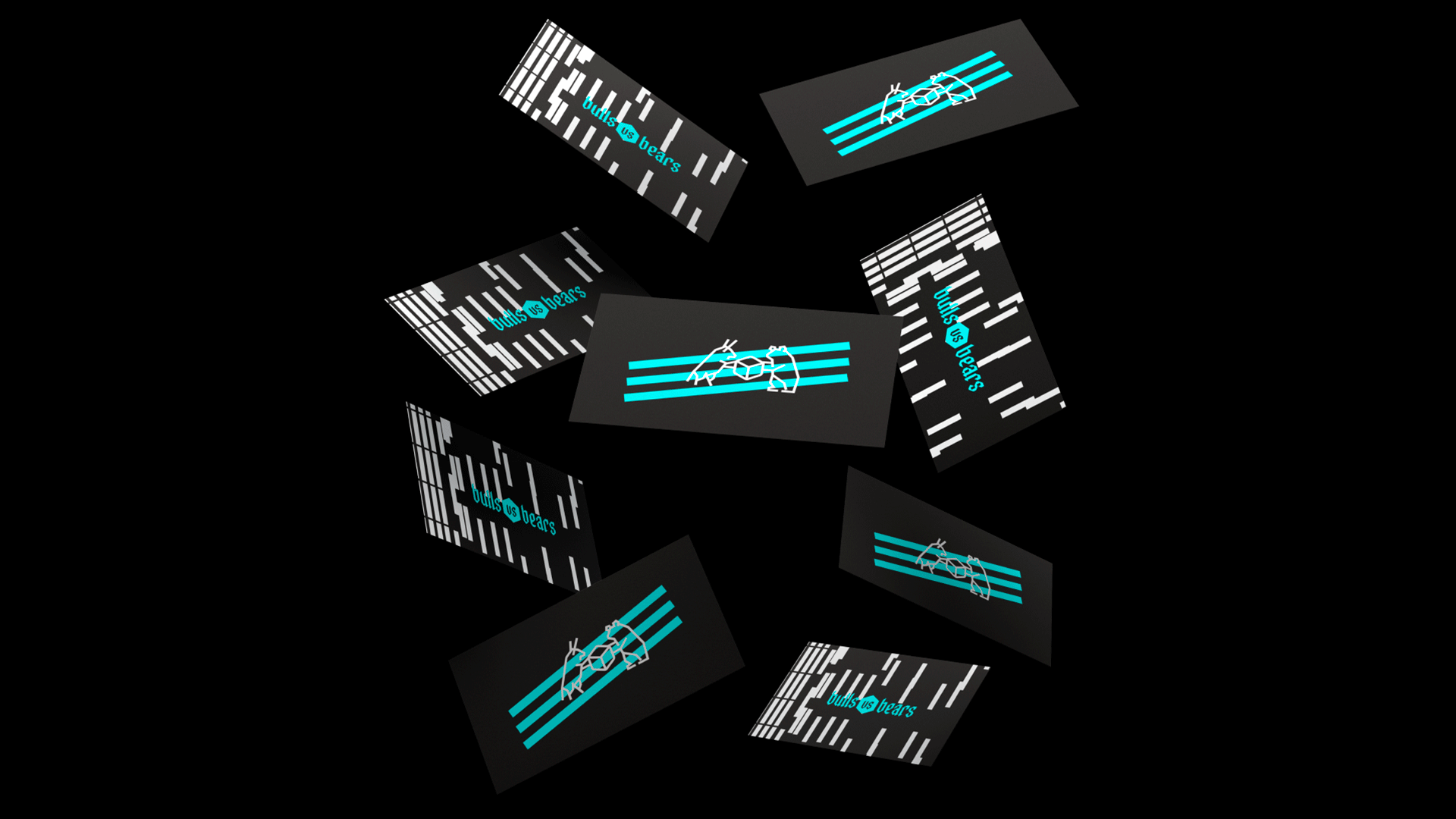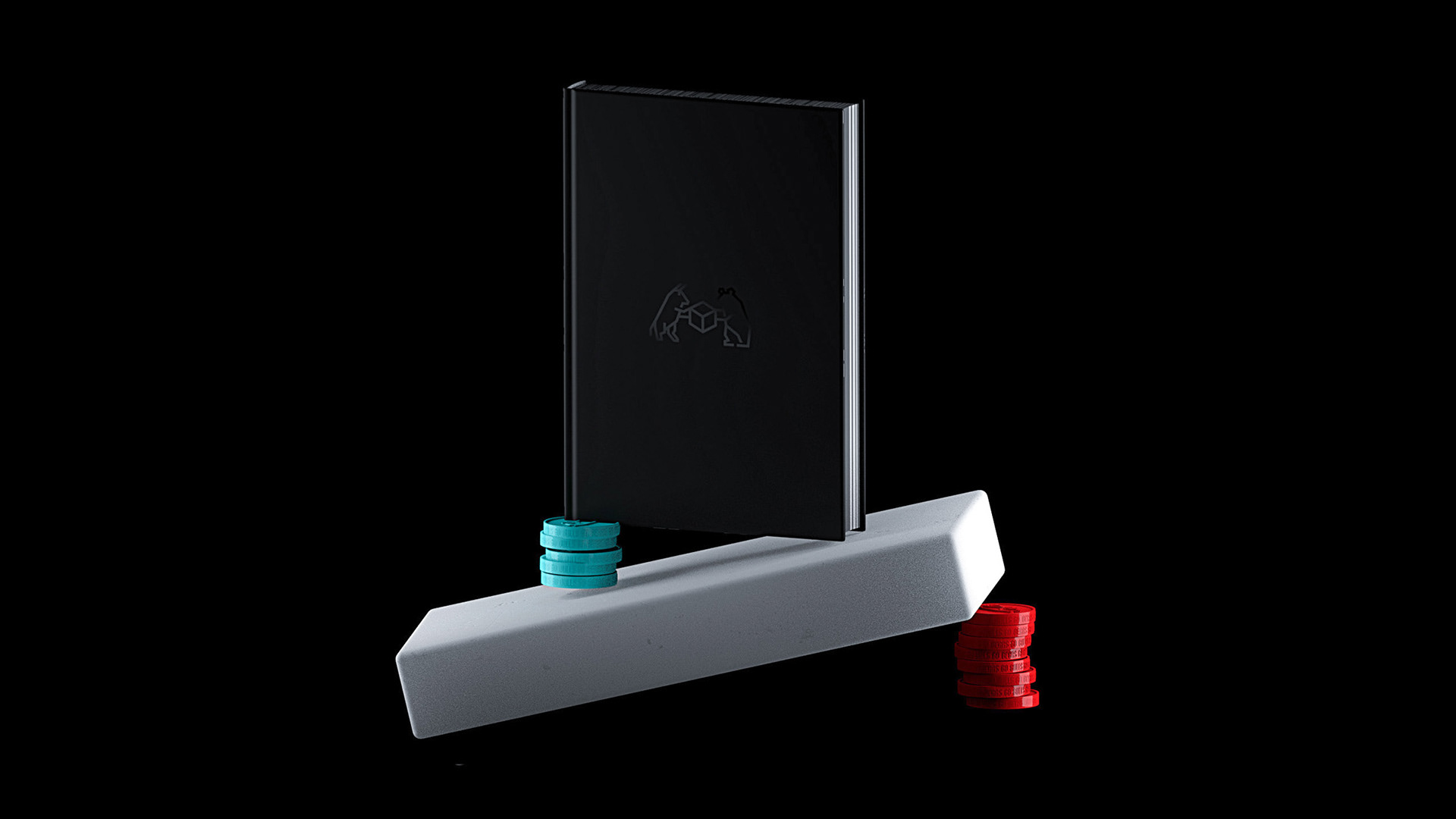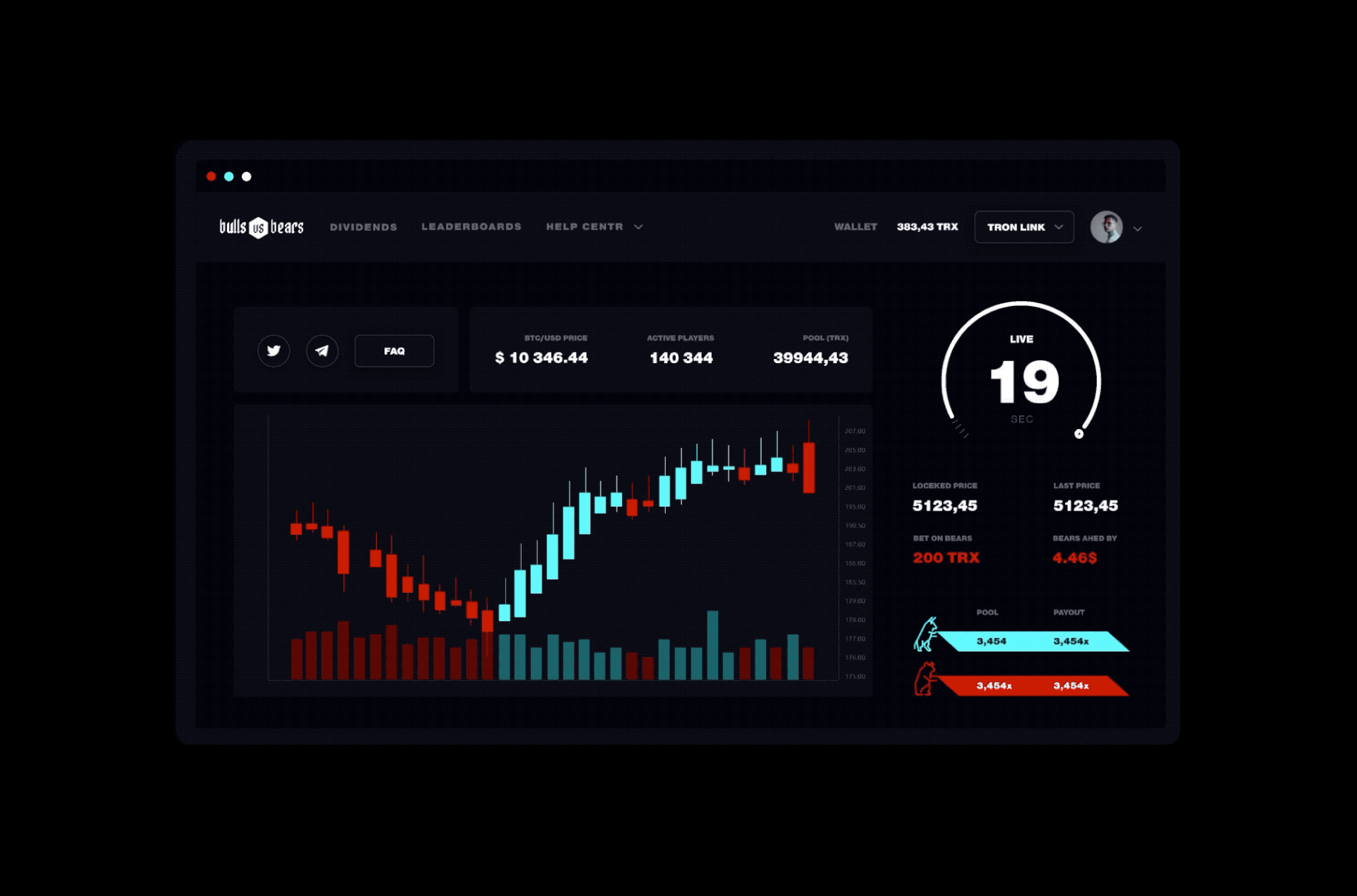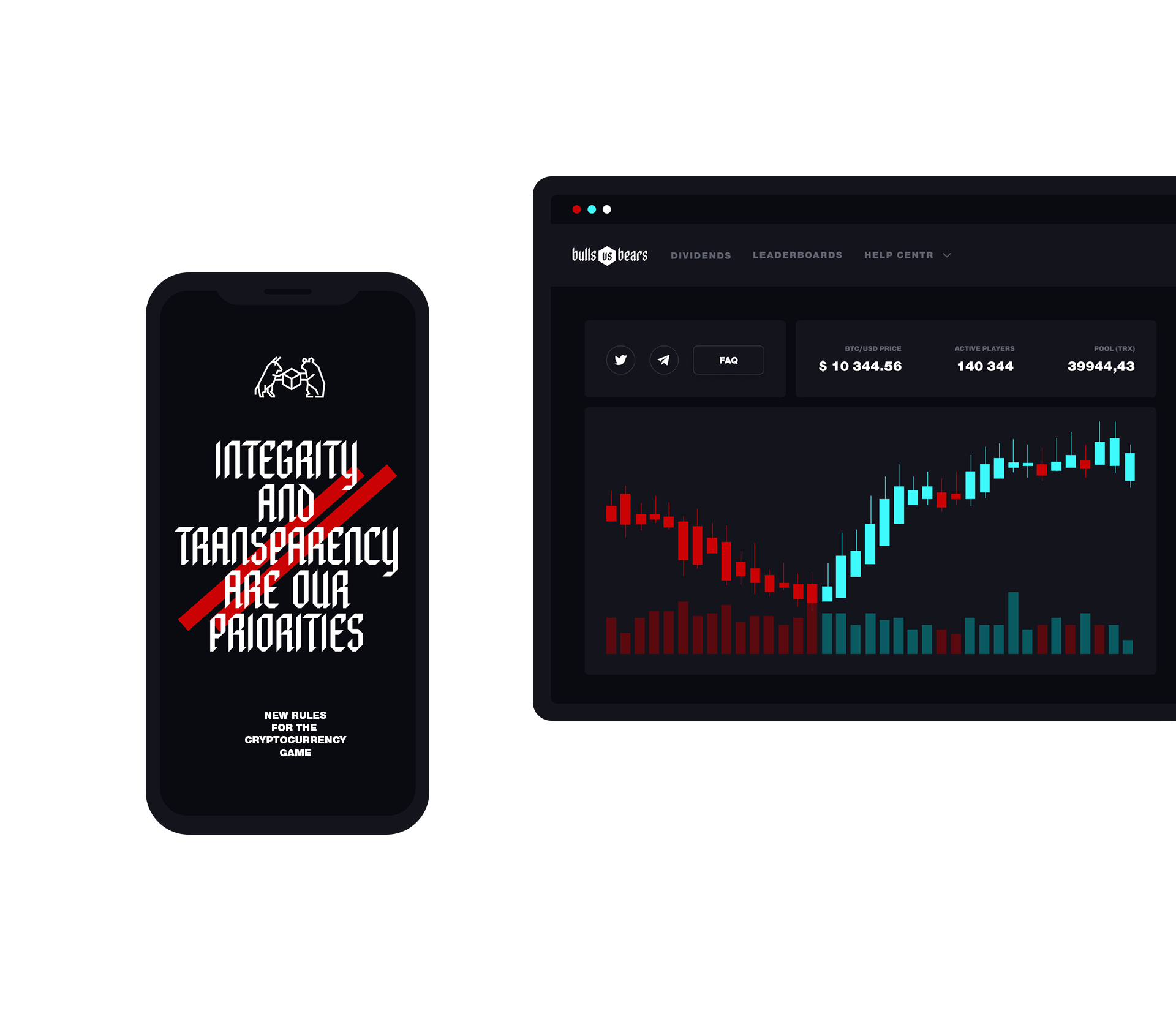A cutting-edge integration of blockchain and gaming
Binary Options is one of the relatively new asset trading services, and it has certainly gathered a huge number of followers over the last few years. The integration of blockchain technology in a binary options trading framework eliminates any concerns about fraud. Bulls vs. Bears is a blockchain-based binary options trading platform that uses Tronix (TRX) crypto as the main digital currency for making trades, where players can trade on 30-second candles. We helped the Bulls vs. Bears team develop this safe betting platform from scratch.
We first met with Danil Myakin, the founder of Bulls vs. Bears, and a strategy executive at Squilla Capital, in the LinkedIn headquarters public lobby on Second Street in San Francisco. We were there to discuss a new project idea he had been exploring for the past several months for a blockchain-based binary options solution.
Danil was looking for a special skill set and a team with a strong expertise in technology, that was also capable of providing a great design and UX. This was a perfect match for Evrone, as we specialize in developing high-load applications and experimenting with new technologies.


The challenge
Danil is a seasoned professional and has experience with the blockchain ecosystem, the development of analytical platforms, and a huge database of other projects. He also has extensive experience managing projects and generating clientele. Danil was imagining how new technology could be used in one of the most conservative sectors of entertainment. He came up with the idea to bring the benefits of blockchain technology to betting and trading software, specifically targeting the crypto community and providing them with tools and technologies that would generate more engagement and interest in crypto investment. He wanted Bulls vs. Bears to bring transparency and fairness to the binary options field, eliminating problems and delivering a transparent and fun platform for trading without brokers.
At that point, we had seen many companies try to leverage blockchain technology. However, 90% of them had gone under, partly because of the BTC crash, but also because they were not able to find any product or market fit. So, after talking with Danil and diving into the idea, we developed a genuine interest in this project and seeing it succeed.
We are tech experts, and so we were quite familiar with most of the tech stack. However, with blockchain project specifics, you may not be able to tell how good the third-party software is until you really try it. This happened quite often, because the industry had only been developing for a couple of years and the software frequently contained surprises. We went through a similar experience using Hyperledger during its early days. So, for the Bulls vs. Bears project, the most challenging part was the Tron wallet software and the betting and wagering logic.
The solution
We built the whole project from scratch, starting with the design concept, backend, and frontend development. We used Python to build an architecture and the logic behind it, which gave us the flexibility we needed to adjust the software to meet the project’s needs.
The “killer feature” is that the entire logic of the game process is in a smart contract. So, users can bet on up and downs, and the calculation of wins and losses occurs in a smart contract. Payouts are also performed by a smart contract and trade settlement data is stored on the blockchain, providing unparalleled transparency and reliability.
Are you interested in an interactive stock market game? We can build a real-time solution like Bulls vs Bears—contact us to learn more!
The infrastructure is the same as most of our projects. We used Kubernetes and K3s (the lite version of the Kubernetes environment) with monitoring and logging.
Getting to know Tron
We built the platform on top of the Tron service, and the smart contracts running on the Tron network are written in Solidity. While smart contracts are responsible for the main logic of the game, monitoring exchange rates, and determining the winner, the Python server is responsible for accounting, downloading and storing part of the data from the Tron network, and fast access to game results.
When we started the trading software development, the Tron network and its related products had not been released yet. We worked on and developed the project exclusively on the test network. So immediately after the Tron network’s release, we encountered some problems. Its speed and stability weren’t great, so we had to spend a bit more time stabilizing the network. In the test net, everything worked great, but in production, we got a bunch of errors and problems connected mainly to the performance. However, we eventually solved all the problems, and when the network stabilized, everything went like clockwork. At that time, there were not many developers who did anything on TronLink, so we were one of the pioneers of that network.



Building real-time charts
On the platform, all the charts and graphs are plotted in real-time. The history of graphs and fluctuations is stored, so that users can roll back and check the changes in the graphs in real-time. We needed to minimize latency, so that everything worked very quickly and the charts were built in real-time, with a minimum delay. At first, we used the TradingView Lightweight Charts Library and tried to implement all client requests on it, but this turned out to be impossible. Therefore, we had to adapt the full-fledged TradingView library to suit the project, but there we also ran into some issues, since it was still necessary to adapt the backend for this business. The solution was to write an adapter from scratch to connect the library to our backend, which we did successfully.
On the frontend, we used React framework, Redux, TypeScript, and GraphQL for database queries. The platform is adaptive, mobile-friendly, and cross-browser compatible. We also integrated Tron wallets through the TronLink and GuildWallet Chrome browser extensions. This was our first experience with this type of gaming software development, but it was an incredibly rewarding and interesting project to work on.

Developing an honest, refined, and modern identity
When it came to the design identity and UX of the project, the client was looking to provide users with an intuitive interface to let them have fun trading. It was important to let people play for a long time and to educate them by showing them things like possible strategies.
We prepared three design concepts, and Danil chose the one that matched his vision. We carried out thorough research on the competitors’ financial online trading platforms, and found that their UIs and overall designs were lacking. So, one of the key advantages of the Bulls vs. Bears product would be a fundamentally different attitude towards players. We focused on the simplification of the game and payout process and a more transparent system of payouts and income distribution. We represented the process of playing on the cryptocurrency market as a compilation of candle-diagrams and brought order to all those “sticks”. The identity of the project can be characterized in three words: honest, refined, and modern.
Danil and our design team worked really well together to deliver a great product, and the sleek, intuitive UX gave Bulls vs. Bears a substantial advantage over their competition.

Saving Bulls vs. Bears from a heavy DDoS attack
At 11:00 AM on February 6, 2020, Bulls vs. Bears began experiencing a heavy DDoS attack on its servers. The attacker demanded a ransom, and the peak was 60 million requests per hour, with penetrated Cloudflare protection.
We alerted the Bulls vs. Bears team to the DDoS attack and had them set aggressive DDoS parameters in Cloudflare. Every user was checked thoroughly on JavaScript browser-challenge. When they entered the site, the Cloudflare page was displayed first, then after a few seconds, if everything was fine, they were redirected to the website. The attack was thwarted within two days and nothing was stolen. The project team made a series of public announcements about the attack, and the community was very supportive.
Bulls vs. Bears’ growth and achievements
After successfully materializing the benefits of using blockchain technology in the gaming business, Bulls vs. Bears continues to flourish, making small improvements as needed. The crypto binary trading platform recently celebrated its first milestone of 550k TRX daily volume. The team’s future plans include integration with Ethereum blockchain, onboarding non crypto-native users, adding additional games, and more. This was a challenging, but rewarding project, and we had a great experience working with Danil and his team to build this product from the ground up. We look forward to seeing them continue to thrive.
Bulls vs. Bears pivot
After closely monitoring customer feedback and KPIs, Danil decided to take Bulls Vs. Bears further to expand the target audience into non-crypto native players. To do so, soon enough the game will be integrated into online casinos all over the world.